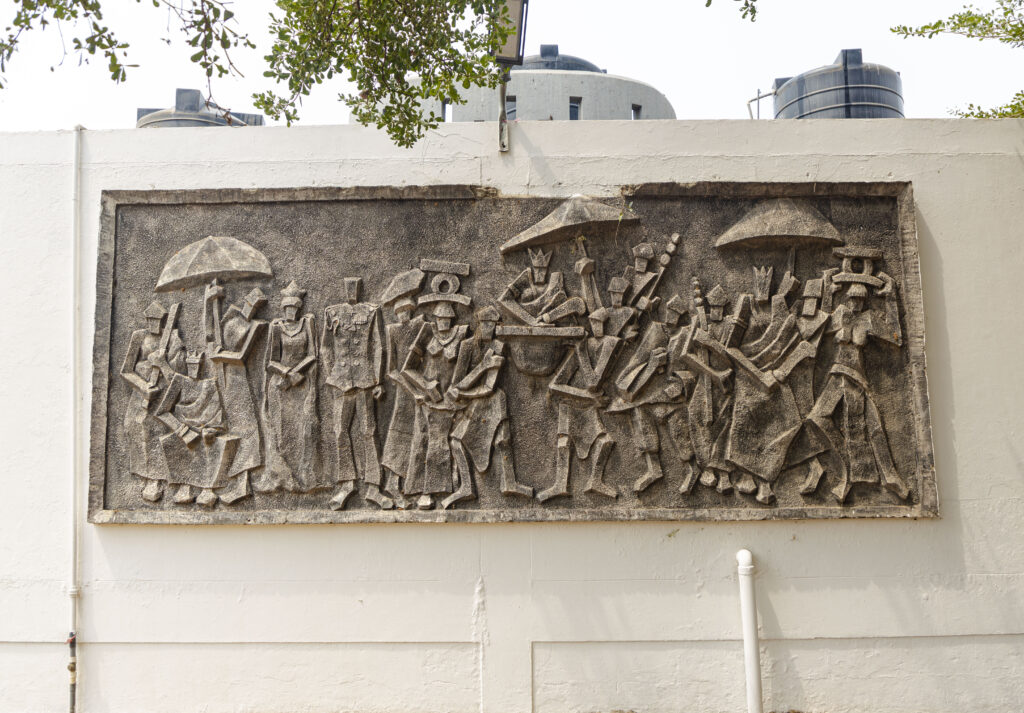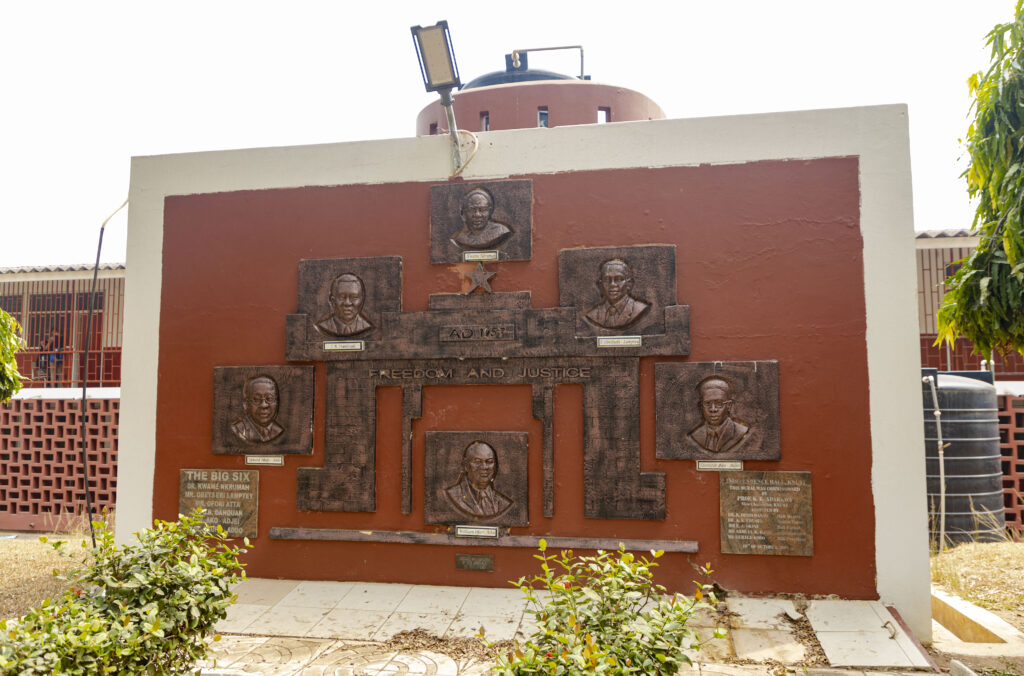On the campus of KNUST, where history and culture intersect, the Big Six Monument at Independence Hall stands as a powerful symbol of Ghana’s independence. However, many may not know the man behind this iconic structure—Jesse James Azzu, a sculptor whose journey from Odumase Krobo in the Eastern Region to the world of academia is as intricate as the artwork he creates.
Azzu has etched his name into the university’s history, leaving behind a legacy not just in stone and concrete but in resilience, passion, and cultural pride.

A Unique Path to Sculpture
Azzu’s journey to becoming a sculptor was anything but conventional. Growing up in a family where law and architecture were the preferred career paths, his passion for drawing set him apart. While his mother envisioned him as a lawyer and his father hoped he would become an architect, Azzu felt a different calling—sculpture.
Choosing to pursue his passion was a bold decision, driven by his belief that true fulfillment lay in artistic expression, even if it meant going against his parents’ expectations.
His artistic journey was further influenced by a rich family legacy. He is related to the late Vincent Akwete Kofi, a renowned artist and former head of the Art Department at KNUST, whose works once featured on Ghanaian currency. This connection to a celebrated artist added deeper meaning to his pursuit of sculpture.
Reflecting on his craft, Azzu humbly stated, “I am proud of all my works. Sometimes, even I don’t know how I arrive at the finished product. It’s not about having numerous projects to my name, but the love I have for the work. It’s more of a gift than a study.”

Creating the Big Six Monument
The inspiration for the Big Six Monument came from a spontaneous idea. Though Azzu was a resident of Queen’s Hall, he frequently visited Independence Hall and wanted to create something that reflected Ghana’s independence.
During this period, he met Prof. Kwasi Obiri-Danso, then Hall Master of Independence Hall, who encouraged him to propose ideas. Initially, they considered depicting the Eve of Independence and the Point of No Return before deciding on a sculpture representing the Big Six together in concrete—a first of its kind in Ghana.
“This is the first monument in the country where the six leaders are depicted together in concrete,” Azzu noted.
The Big Six Monument has since become a defining symbol of Independence Hall. Every year on March 6, the university gathers to lay wreaths in honor of the hall, the institution, and the nation.

A Lasting Legacy at Queen’s Hall
Azzu’s commitment to leaving a legacy extended beyond Independence Hall. He approached his Hall Master at Queen’s Hall, Dr. Owusu-Daaku, with a proposal to create something significant for the hall. With approval, he embarked on projects representing:
- Theme of Development – Highlighting the hall’s and university’s growth through architectural elements.
- Theme of Achievement – Celebrating the hall’s successful alumni, including professionals in various fields.
- Theme of Royalty – Incorporating traditional elements alongside representations of Queen Elizabeth II and the Duke of Edinburgh.
Promoting the African Narrative
Azzu is deeply committed to promoting African narratives through his art. His work incorporates inscriptions and cultural symbolism, reflecting his belief in storytelling through sculpture.
“African art is evolving rapidly, with new abstract ideas emerging at an incredible pace,” he observed.
Other Notable Works
Beyond KNUST, Azzu has made significant contributions to various artistic and architectural projects, including:
- The Gyamadudu Museum in the Ashanti Region, where he was instrumental in constructing and supervising the dome house.
- The 60-foot diameter ECG main logo cast in Kumasi, showcasing his expertise in large-scale casting.
- Sculptures at St. Hubert Seminary and KNUST Senior High School, further cementing his impact on educational institutions.
From monumental sculptures to intricate artistic expressions, Jesse James Azzu continues to shape Ghana’s artistic landscape, ensuring that history and culture remain alive through his craft.

